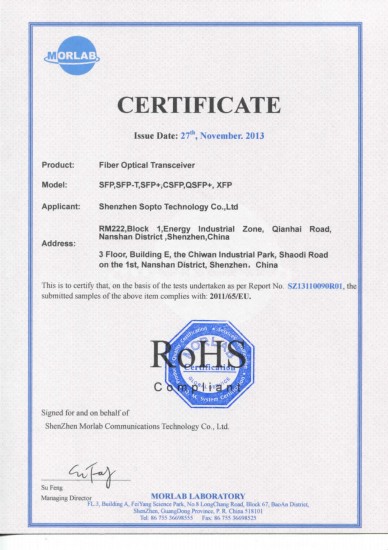-

- Sopto Home
-

- Special Topic
-

- PCI-E Card Knowledge
-

- How PCIe 4.0 Stacks Up
PCI-E Card Knowledge
- Info about Network Interface Card Teaming
- How to Setup a Server with Multiple Network Interface Adapters?
- How to Reconnect an Internet Network Adapter for an Acer Aspire?
- 9 Things to Do When Your Internal Network Card Stops Working
- Ethernet Standards NIC for Home Networking
- What Is a Network Interface Adapter?
- How to Configure a Network Interface Card in Linux?
- How should Configure Your NIC for ISA and TMG?
- Recommended Network Card Configuration for Forefront UAG Servers
SOPTO Special Topic
Certificate



Guarantee
Except products belongs to Bargain Shop section, all products are warranted by SOPTO only to purchasers for resale or for use in business or original equipment manufacturer, against defects in workmanship or materials under normal use (consumables, normal tear and wear excluded) for one year after date of purchase from SOPTO, unless otherwise stated...
Return Policies
Defective products will be accepted for exchange, at our discretion, within 14 days from receipt. Buyer might be requested to return the defective products to SOPTO for verification or authorized service location, as SOPTO designated, shipping costs prepaid. .....
Applications

PCI-E NIC Cards provide redundant connectivity to ensure an uninterrupted network connection.
PCI-E NIC Cards are ideal for VM environments with multiple operating systems, requiring shared or dedicated NICs.
They are specially designed for desktop PC clients, servers, and workstations with few PCI Express slots available.
SOPTO Products
- Fiber Optic Transceiver Module
- High Speed Cable
- Fiber Optical Cable
- Fiber Optical Patch Cords
- Splitter CWDM DWDM
- PON Solution
- FTTH Box ODF Closure
- PCI-E Network Card
- Network Cables
- Fiber Optical Adapter
- Fiber Optical Attenuator
- Fiber Media Converter
- PDH Multiplexers
- Protocol Converter
- Digital Video Multiplexer
- Fiber Optical Tools
- Compatible
Related Products
Performance Feature
PCI-E Card Knowledge
Recommended


How PCIe 4.0 Stacks Up
Given the future enhancements to the PCIe specification, the industry now has more insight into how the interconnect landscape will evolve over the next 5 to 10 years. With a handful of interconnect technologies actively competing in the market, PCIe supports two important differentiators that solidify its position as the de facto I/O technology.
First, no other industry protocol can achieve the kind of bandwidth of the coming PCIe 4.0 technology. Every four years PCI-SIG has doubled the PCIe specification bandwidth. Following the release of the next specification, a PCIe 4.0 x16 device will support 64 Gbyte/s of total bandwidth. Other interconnect technologies simply cannot deliver this level of bandwidth capacity. Also, new emerging interfaces such as Ethernet 40G/100G, InfiniBand, solid-state drives (SSDs) and flash memory are demanding bigger pipes, and the PCIe architecture is the only technology solution that can achieve this level of performance with minimal new software.
Second, PCIe architecture is truly an open standard. PCI-SIG allows companies from across the computing industry to collaborate to develop a standard addressing the unique demands and challenges each company faces. There is a “one price for all” pricing model to ensure an equal playing field for all companies, as attested to by the organization’s more than 800 active members. And while PCI-SIG is represented by a board of directors, the board members are required to be elected by the entire membership base.
The industry has invested many years of software and hardware development and testing for PCIe technologies, so leveraging that experience through PCI-SIG membership is very cost-effective from a development perspective. This organization model ensures the industry is getting the solutions it needs, when and how PCI-SIG members need it.
You May Want to Know:
PCI Express History and revisions



